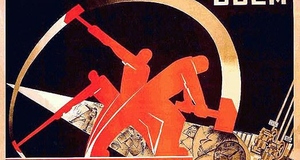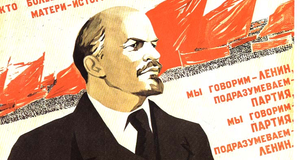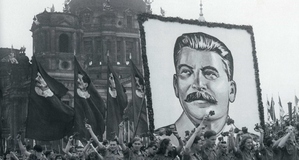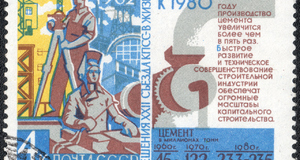The Soviet Nationality Policy in Central AsiaReligious shrines were transformed into monuments praising communism and atheism (Soucek 2000, pp. 247-8). While one can say that the concept of ethnicity did not exist in Central Asia, in many cases Islam was the most important means for self-identification. In fact, as most rituals and customs derive from Islam, identity and faith became intertwined. Like Akiner states: “…to have abandoned such markers of identity as, for example, circumcision and Islamic burial rites, would have been to cut oneself off from one’s ancestors, to become an isolated individual rather than a member of a living community link to past, present, and future generations” (Bohr 1996, pp. 381). Thus, despite all of the Soviet efforts to eliminate religion, Islam in Central Asia was ingrained into one’s ethos and thus was driven underground. Once WWII began, the anti-Islam campaign was slightly diminished in order to gain support for the war effort among Muslims and two madrasas in Bukhara and Tashkent were reopened, although closely monitored by the state. Following the war, an official Islamic establishment was allowed, the purpose of which being more to facilitate better relations with Muslim nations than granting religious freedom (Ibid, pp. 338). The abolishment of the Arabic script also had implications for the practice of Islam, as well as conceptions of national identity. When the Arabic script was replaced with the Latin alphabet in 1930, Central Asians were cut off from the ability to read the Qur’an. Additionally, this change meant that they did not have access to their own written histories, a majority of which was written in Arabic (Ibid, pp. 337).The events of 1979 in Iran worried the Soviet leaders, fearing that the Islamic Revolution would spillover into its borders. However, the consequences of the Iranian Revolution were not so influencing, only causing a series of anti-Soviet riots in Central Asian cities. Originally, it was praised by the Soviets as an anti-imperialist and revolutionary movement. Law enforcement and security was stepped up in the republics, and articles attacking Islam were published (Haghayeghi 1995, pp. 35-6). The Great Retreat: Soviet Nationality Policy under StalinThe switch to Cyrillic in 1940 only served to further confuse the population and exhibited the changing Soviet attitudes. Indeed, the period following the establishment of the nationality policy in 1923 up to 1928 was a working out phase for the Bolsheviks. In 1928, Stalin sped up centralisation and indigenisation achieved progress in the Soviet east (Martin 2001, pp. 26). But by the end of the 1920s, Stalin abandoned attempts to build alliances with indigenous and religious elites, instead switching to a policy of mass terror in an era that is known as the ‘Great Retreat’ (Coppieters 1998, pp. 23-4). While Lenin believed that Great-Russian chauvinism was a threat to Soviet state building, Stalin ascertained that national minorities posed a greater danger (Smith 1996, pp. 7). Growing opposition to Soviet rule, such as the Basmachi resistance movement, was significant in fuelling this thinking. In 1933, Stalin’s first wave of repression to reverse the policies of indigenisation began. While national symbols were kept, Slavs began to dominate positions of leadership (Bremmer 1993, pp. 401). Central Asians were forced to ignore issues of national identity, as their elites began to be accused of harbouring nationalist tendencies and thus purged or sent to gulags (Soucek 2000, pp. 237). Russian language instruction became mandatory and russification caused the adoption of common Russian terminology in native languages. The growing decline of Arabic and the use of Russian as the lingua franca of the region separated Muslims from their neighbours and created a communication barrier between them (Blank 1994, pp. 53). Another aspect of the nationality policy under Stalin was the migration of peoples, where individuals were persuaded, and oftentimes forced, to inhabit the extent of the USSR in order to make republics ethnically diverse. In practice, this meant the domination of Slavs in major cities, especially in Central Asia. In no Central Asian capital city did the titular nationality outnumber that of the Slavs. Additionally, instruction of non-Russian language to Slavs was looked negatively upon. As a result of these two factors, as well as its status as an official language in each republic, Russian dominated daily life in the capital cities (Fierman 2009, pp. 1216). While Slavs enjoyed this enhanced status alongside titular peoples, non-titular nationalities were assumed to be disloyal and underwent ethnic cleanings, arrests, and executions (Martin 2001, pp. 387). Whether an individual was living in his titular nation or not became extremely important once one’s national identity started being recorded in internal passports in the early 1930s. Finding oneself in the ‘right’ nationality could lead to a privileged status, while the ‘wrong’ nationality would mean assimilation, or at worst lead to deportation (Appleby 2010, pp. 852). Soviet Nationality Policy After StalinAfter Stalin died and Stalinism was dismantled, a ‘silent’ or a ‘lighter’ form of indigenisation continued whereby more and more members of the non-Russian society gained representation in their local party and state leaderships. By the 1960s, virtually all top positions were held by locals (Fowkes 2002, 77). Nikita Krushchev removed the system of terror, granting natives in power with more freedom of action. At the 22nd Communist Party Congress, the moulding of all nationalities into a sovetskiy chelovek (Soviet person) was declared complete and the concept of being internatsionalnyi was promoted. Departing from the standard definition of ‘international,’ it promoted the eradication of ethnic differences and the creation of a standardized homo sovieticus (Soucek 2000, pp. 232). However, upon critically examining relations between Slavs and non-Slavs, one can see that this was not the case. The regular flow of skilled Slavic migrants and settlers from Russia to Central Asia, either forced or voluntary, was reversed and Russians started returning to the RSFSR (Zaslavsky 1993, pp. 39). Low levels of mobility and high birth rates among local nationalities, combined with this out-migration of Slavs from Central Asia increased the percentage of local nationalities in their own territories (Lubin 1991, pp. 37). One reason for Slavs leaving Central Asia may be to due feelings of marginalisation among the increasing indigenous population, as well as a growing clear distinction between Slavs and the Central Asian peoples. In a poll conducted in the late Soviet period, one researcher noted that Slavs rarely intermingled with Central Asians outside of work. Slavs thought of natives as backward and violent, and criticised them for their poor Russian language skills (Wixman 1991, pp. 163). These negative attitudes towards natives are contrary to the Soviet nationality policy’s aim to minimize ethnic differences and create a united Soviet people. The increasing privileged status of the Russians as firsts among equals, or ‘elder brothers’ of the Soviet people, was antagonizing to Central Asians (Ibid, pp. 176). By the time of Brezhnev, elites in the five republics, such as Dinmukhamed Kunaev of Kazakhstan or Sharaf Rashidov of Uzbekistan, had learned how to receive the maximum benefits from Moscow. By pledging loyalty to the Kremlin and its demands, Moscow ignored the increasing indigenisation occurring domestically in each republic. Soucek describes the elites in Kazakhstan as not “nationalists or patriots, but within the parameter of the permissible they were thoroughly Kazakh.” While not nationalists, they supported the sustainment of their own clans in power. By working with loyal cadres, Moscow could manage a growing nationalist sentiment that was developing among the Central Asian intelligentsia (Soucek 2000, pp. 256-8).Continued on Next Page » Suggested Reading from Inquiries Journal
Inquiries Journal provides undergraduate and graduate students around the world a platform for the wide dissemination of academic work over a range of core disciplines. Representing the work of students from hundreds of institutions around the globe, Inquiries Journal's large database of academic articles is completely free. Learn more | Blog | Submit Latest in History |


















